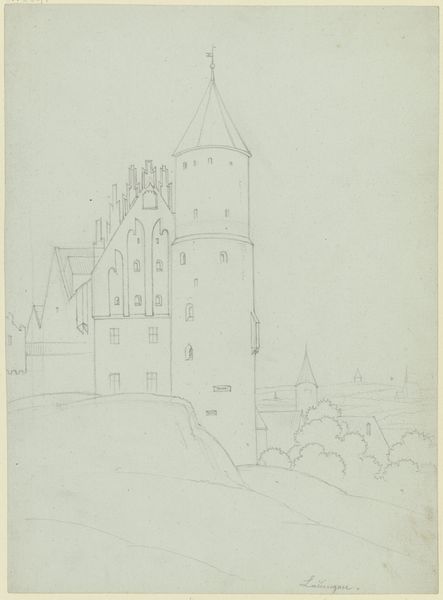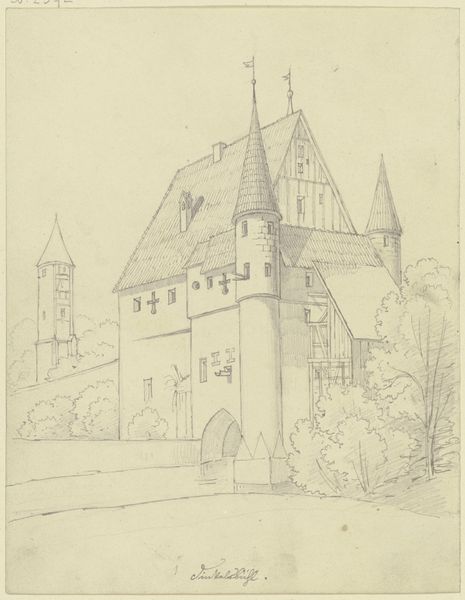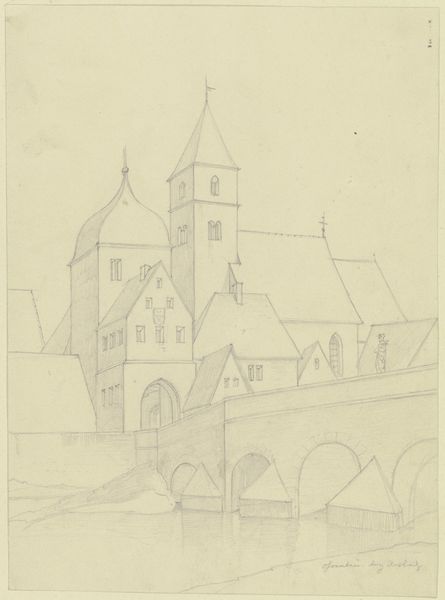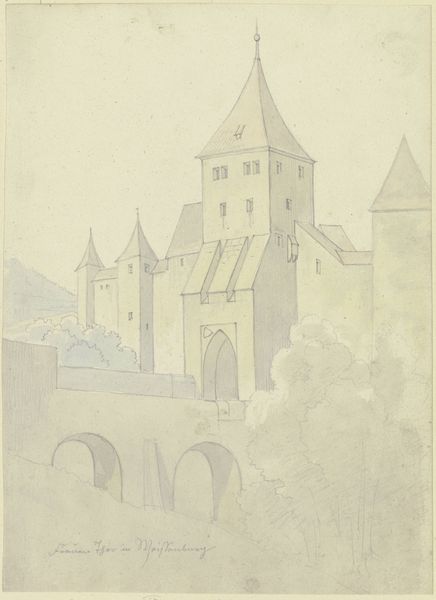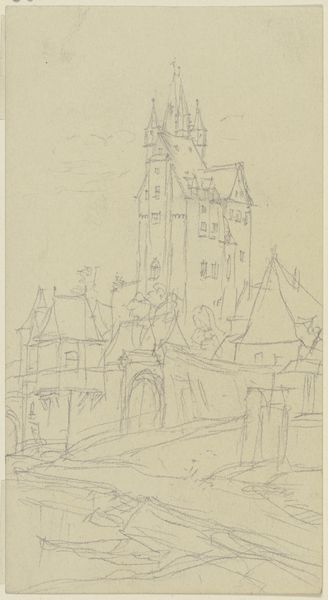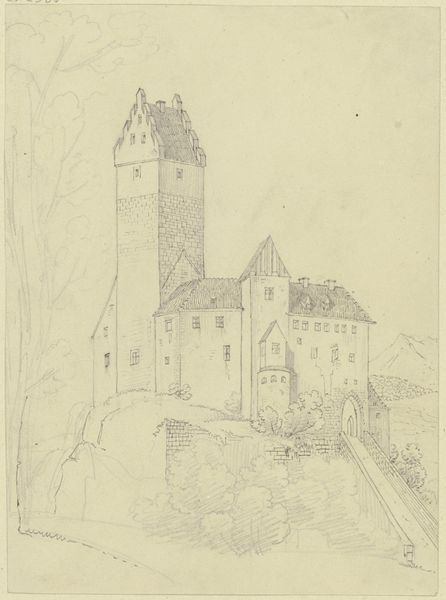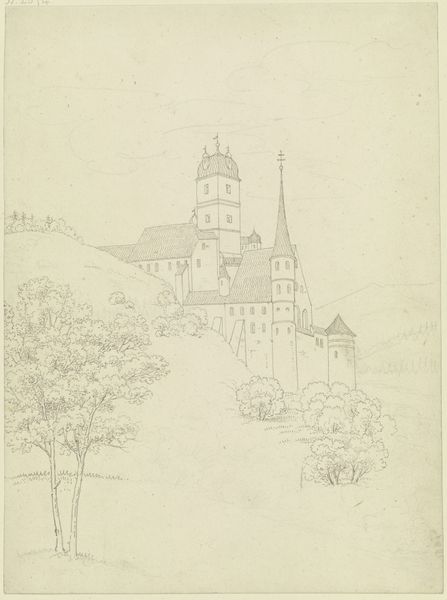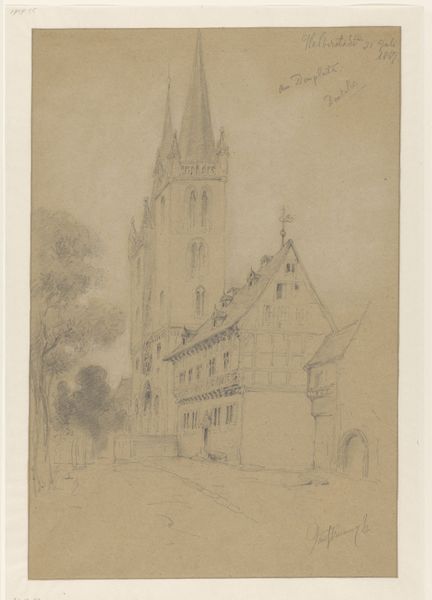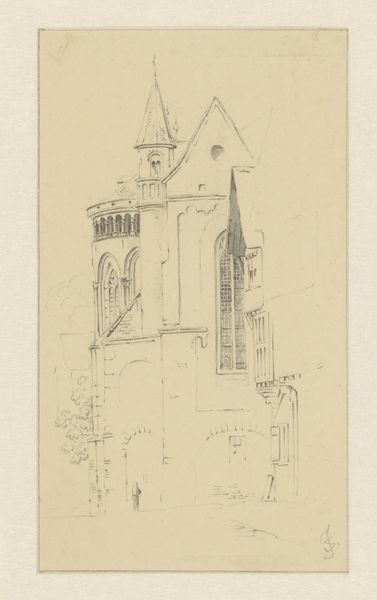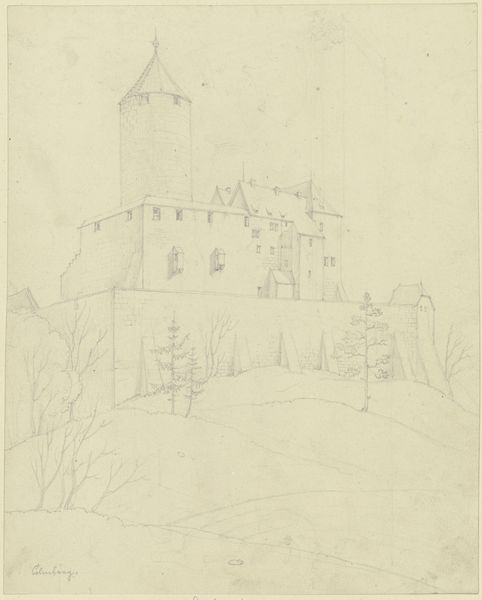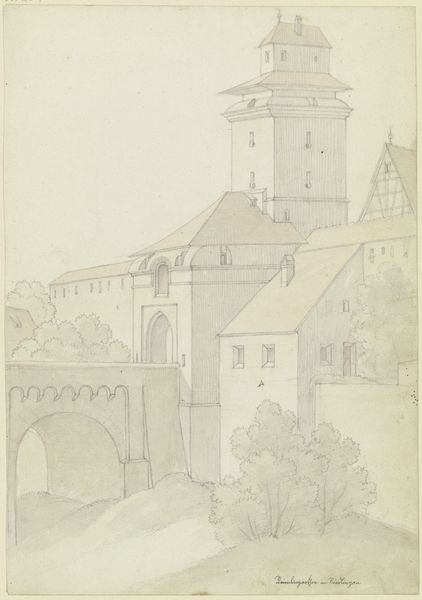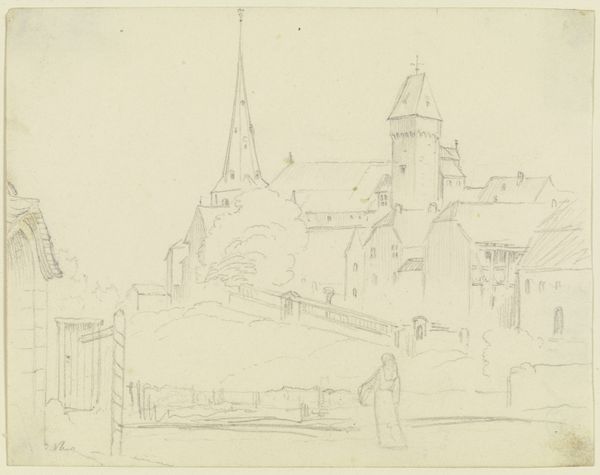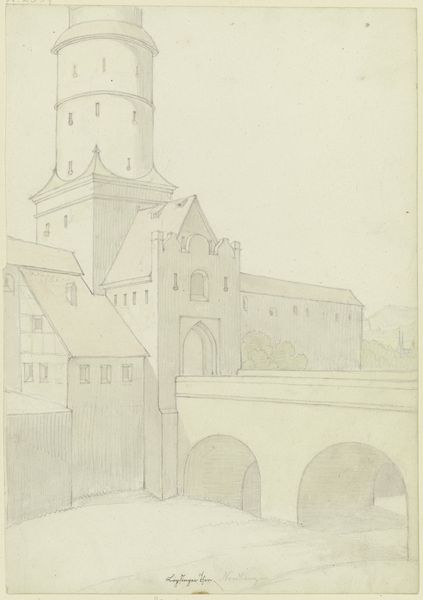
drawing, pencil, architecture
#
drawing
#
landscape
#
etching
#
pencil
#
line
#
architecture
Copyright: Public Domain
Editor: Here we have Karl Ballenberger’s pencil drawing, "Weißenhorn." It has a very ethereal feel because the artist sketched in such light strokes. The castle is looming and imposing. How do you approach a piece like this? Curator: Looking at this through a materialist lens, I see an emphasis on the architecture of power—the castle as a center for the control of resources and labor. What raw materials went into its construction? Who quarried the stone, and under what conditions? Editor: That's a side I had not considered! So you're thinking about the people who were probably involved in creating the actual physical structure, rather than, say, the people who eventually occupied it? Curator: Precisely. And the drawing itself, the pencil marks on paper, represent another kind of labor, the artist’s work in representing this power structure. Note how the stark lines contrasts with the subtle shading. What does this tell us about the artist's position? Editor: I guess I was focusing so much on the overall image that I didn’t even notice how striking those individual lines were or wonder what it took for the artist to create the architectural perspective, and that's why it feels ethereal. It is this fine pencil on the page, the labor-intensive architectural sketch… It's much more layered now. Curator: Consider, too, how drawings like this would have circulated. Were they for architectural planning, or artistic study? The material history of the drawing is intertwined with the social history of the building it depicts. It's easy to get lost in the beauty but let us not forget where the resources came from and to whom this structure benefits. Editor: It makes me appreciate not just the artistry but also the deep context woven into even a seemingly simple landscape sketch.
Comments
No comments
Be the first to comment and join the conversation on the ultimate creative platform.
